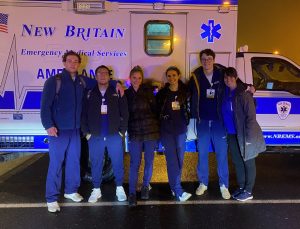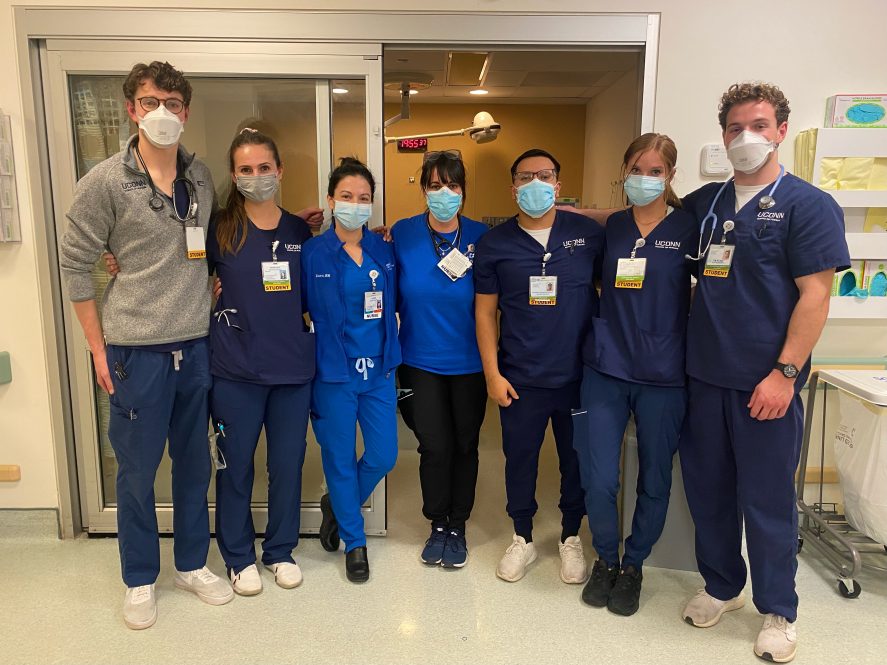The School of Nursing PRAXIS pledge is guided by six principles: professionalism, respectfulness, accountability, excellence, integrity, and service. These values were recently displayed by four senior nursing students, who used their nursing skills during a medical emergency in public.
Ricardo Baltazar-Rojas, Caitlyn Szoka, Luke Wharton, and Tim Rowe belong to the same clinical capstone group under instructor Monika Nelson. Last month, the students were out to eat at a nearby restaurant after completing clinical training hours. While waiting for their food, they were approached by a young man who asked for the students’ help in the bathroom. Just then, another individual ran out of the bathroom yelling for somebody who knew CPR.
“Immediately upon hearing those words, we instinctively ran to the bathroom,” Baltazar-Rojas says. “There, we saw a middle-aged man passed out on the floor, sweating, pale as a ghost, and breathing shallowly.”

The man appeared to be falling in and out of consciousness. The students promptly delegated roles among themselves to keep the situation under control. Wharton and Rowe handled the crowd and called 911 while Baltazar-Rojas and Szoka attended to the man.
“I saw him as my patient,” Baltazar-Rojas says. “I knew we had to keep monitoring him to make sure he didn’t code.”
The students, who are trained to handle this type of medical event, first checked for a pulse. After confirming the man had a pulse, they focused on helping him breathe adequately by sitting him up. They then woke the man up via a sternal rub, which is a technique used by health care workers to alert a nonresponsive patient. A stimulus is applied to the center chest using one’s knuckles with a closed fist. This method was very effective for the students, as the patient woke up following the sternal rub. They stayed with the man and kept him talking until first responders arrived and took over.
“The experience was comfortable, like second nature, because we had just completed a practice simulation on codes and rapid responses in class,” Baltazar-Rojas says. “We knew what to look for and how to delegate tasks. In all honesty, if I had not had the practice in the School of Nursing’s simulation lab, I do not think that I would have felt as comfortable and may not have been able to act as quickly.”
Bystanders were quick to praise the students’ efficient response.
“They were so quick to respond and used their training to help,” said one, who wrote to School of Nursing faculty. “My friends and I were impressed and relieved that there were people there who were able to calmly handle the situation. They did an amazing job.”
Amanda Moreau, the faculty member who taught the mock code and rapid response simulation, says she is proud of the students.
“This semester has been challenging in so many ways and this is a great example of our students upholding PRAXIS,” she says.
The students say that it felt surreal to put their nursing skills into practice in a real-world scenario. For both Baltazar-Rojas and Szoka, this experience solidified their love for the profession and interest in emergency nursing.
“I wanted to become a nurse to help people,” Szoka says. “Having this emergency background has allowed me to feel comfortable helping people even outside the hospital.”
To learn more about the UConn School of Nursing, visit nursing.uconn.edu and follow the School on Facebook, Instagram, Twitter, or LinkedIn.



